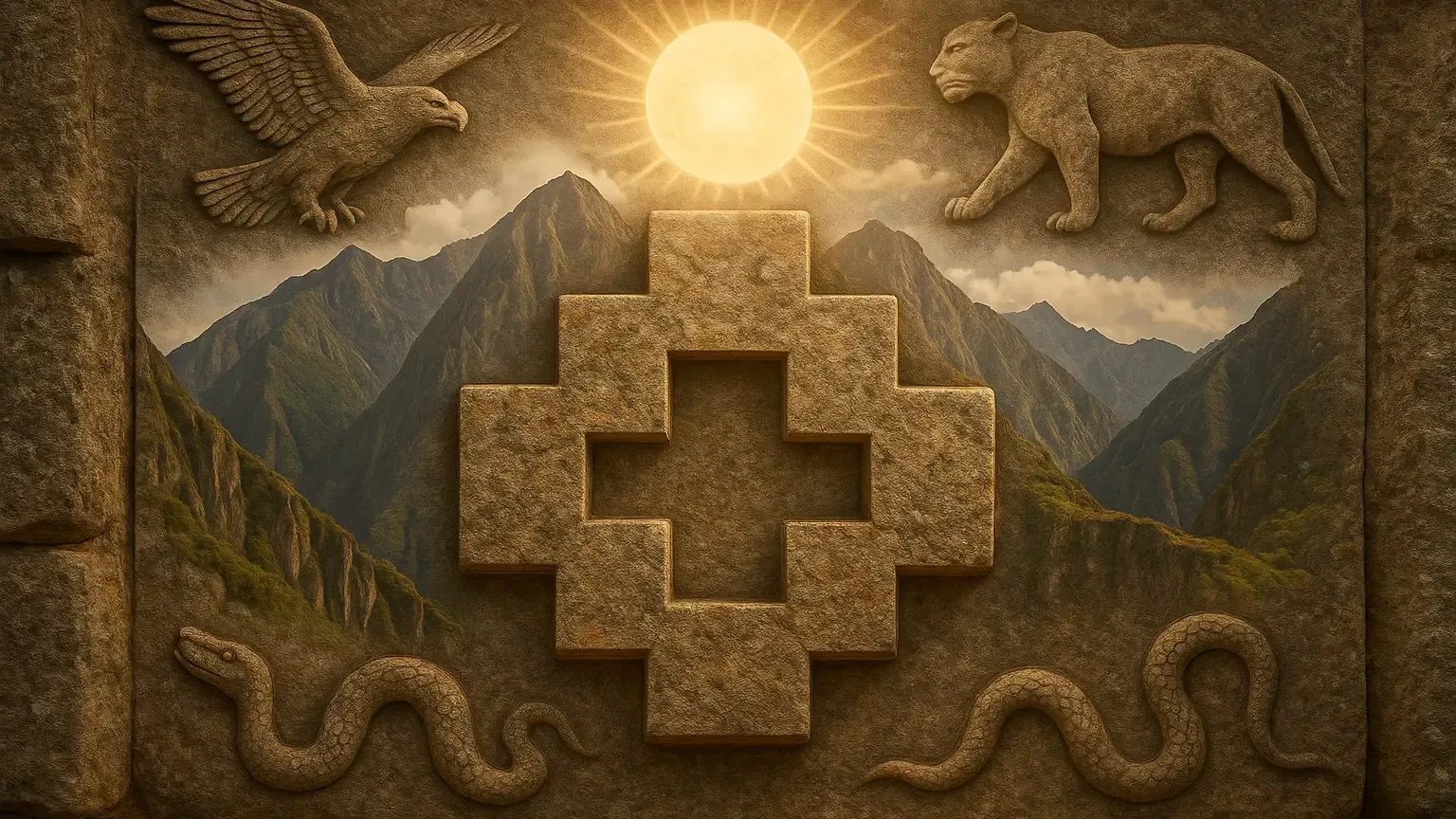Inca Cosmology: The Sacred Universe of the Children of the Sun
The Inca civilization, one of the most remarkable cultures of pre-Columbian America, stood out not only for its architecture, engineering, and agriculture, but also for its complex and deeply spiritual cosmology. Understanding Inca cosmology means opening a door to a worldview that intertwines nature, the stars, human life, and the divine into a single sacred network.
This article explains in clear and simple terms how the Incas understood the universe — and why their perspective continues to inspire people today.
What Is Inca Cosmology?
Inca cosmology is the set of beliefs, symbols, and structures that explained how the Incas viewed the origin of the world, the role of humans, the gods, and nature. For them, the universe was not something distant or abstract — it was alive, constantly in motion, and deeply connected to everyday life.
Their worldview was characterized by cycles, duality, and sacredness. Every natural phenomenon had a spiritual dimension, and everything in the universe was interconnected.
The Three Worlds: Hanan Pacha, Kay Pacha, and Uku Pacha
The Inca cosmos was divided into three interconnected realms:
Hanan Pacha (The Upper World)
This was the celestial world, home to the gods, stars, the sun (Inti), the moon (Mama Killa), lightning, and other heavenly phenomena. It was associated with the sacred, light, masculinity, and wisdom.
Inti, the sun god, was the most important deity — considered the father of the Inca people. His presence governed time, crops, and social order.
Kay Pacha (The Earthly World)
This was the world of the living — where humans, animals, and plants resided. It represented daily life, challenges, and the balance between the spiritual and the material.
This realm was governed by harmony between people and nature, and it was seen as a place of growth and responsibility.
Uku Pacha (The Lower World)
The underworld or inner world, associated with the earth, femininity, ancestors, and the origin of life. Far from being a place of punishment, Uku Pacha was seen as a realm of regeneration and mystery, where seeds germinated and ancestors rested.
It was represented by Mama Pacha, the goddess of earth and fertility.
The Sacred Animals: The Condor, the Puma, and the Serpent
Each of the three worlds was represented by a sacred animal:
-
Condor (Hanan Pacha): The messenger of the gods. Soaring above the Andes, it symbolized spiritual elevation and divine connection.
-
Puma (Kay Pacha): Represented power, strength, and action. It was the guardian of the human realm.
-
Serpent (Uku Pacha): Linked to hidden knowledge, transformation, and the ancestors.
These animals are found carved in stone and portrayed in textiles, pottery, and Inca temples across the empire.
The Chakana: The Andean Cross
One of the most important symbols in Inca cosmology is the Chakana, a stepped cross representing the three worlds, cosmic balance, and the four cardinal points.
Each step of the Chakana also refers to ethical principles, such as:
-
Ama sua – Don’t steal
-
Ama llulla – Don’t lie
-
Ama quella – Don’t be lazy
These values were not only spiritual but deeply ingrained in daily life.
The Stars and the Solar Calendar
The Incas were masters of astronomy. They built temples and observatories aligned with celestial events such as solstices and equinoxes. In Machu Picchu, for example, the Intihuatana stone (meaning “hitching post of the sun”) marks the winter solstice with astounding precision.
Religious festivals followed both agricultural and solar calendars. The most famous celebration, Inti Raymi (Festival of the Sun in June), marked the rebirth of the sun and the beginning of a new agricultural cycle.
Nature Spirits: Apus and Sacred Places
In Inca cosmology, nature was sacred. The highest mountains, called apus, were considered powerful spirits that protected the people. Each village had its own apu, to whom offerings and respect were due.
Rivers, lakes, stones, and trees were also believed to be inhabited by spirits called wak’as, capable of bringing blessings or misfortune depending on how they were treated.
The Role of Humans in the Universe
Unlike anthropocentric worldviews, the Incas saw human beings as just one part of the whole, not its center. Life made sense only when lived in balance with the environment, in reciprocity (known as ayni), and in harmony with the legacy of ancestors.
Legacy and Relevance Today
Although the Inca Empire ended over 500 years ago, its cosmology remains alive in many Andean communities. Earth offerings, celestial observations, and reverence for mountains and natural cycles are still practiced in Peru, Bolivia, and Ecuador.
Beyond South America, Inca cosmology captivates scholars, spiritual travelers, and seekers of ancient wisdom around the world.
Conclusion
Inca cosmology teaches us a powerful lesson: the universe is not something separate from us — it is a living network of relationships we belong to. It invites us to live with respect, awareness, and deep connection to both Earth and sky.
Through its symbols, rituals, and cyclical view of time, the Inca legacy offers a spiritual map that still has much to teach modern society.
A Sacred Experience Awaits You
If you’re inspired to explore Inca cosmology in person, there’s no better place than Machu Picchu — and no better base than Casa del Sol Machu Picchu Boutique Hotel.
Nestled beside the sacred Vilcanota River and surrounded by towering mountains, Casa del Sol offers:
-
Elegant suites with breathtaking views
-
Gourmet cuisine rooted in Andean ingredients
-
Holistic rituals at K’intu Spa
-
Walking distance to the Machu Picchu shuttle
-
Eco-conscious design infused with Inca symbolism
-
Personalized spiritual and cultural experiences
